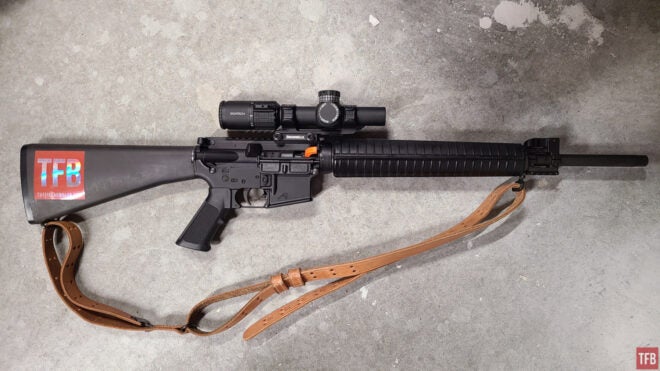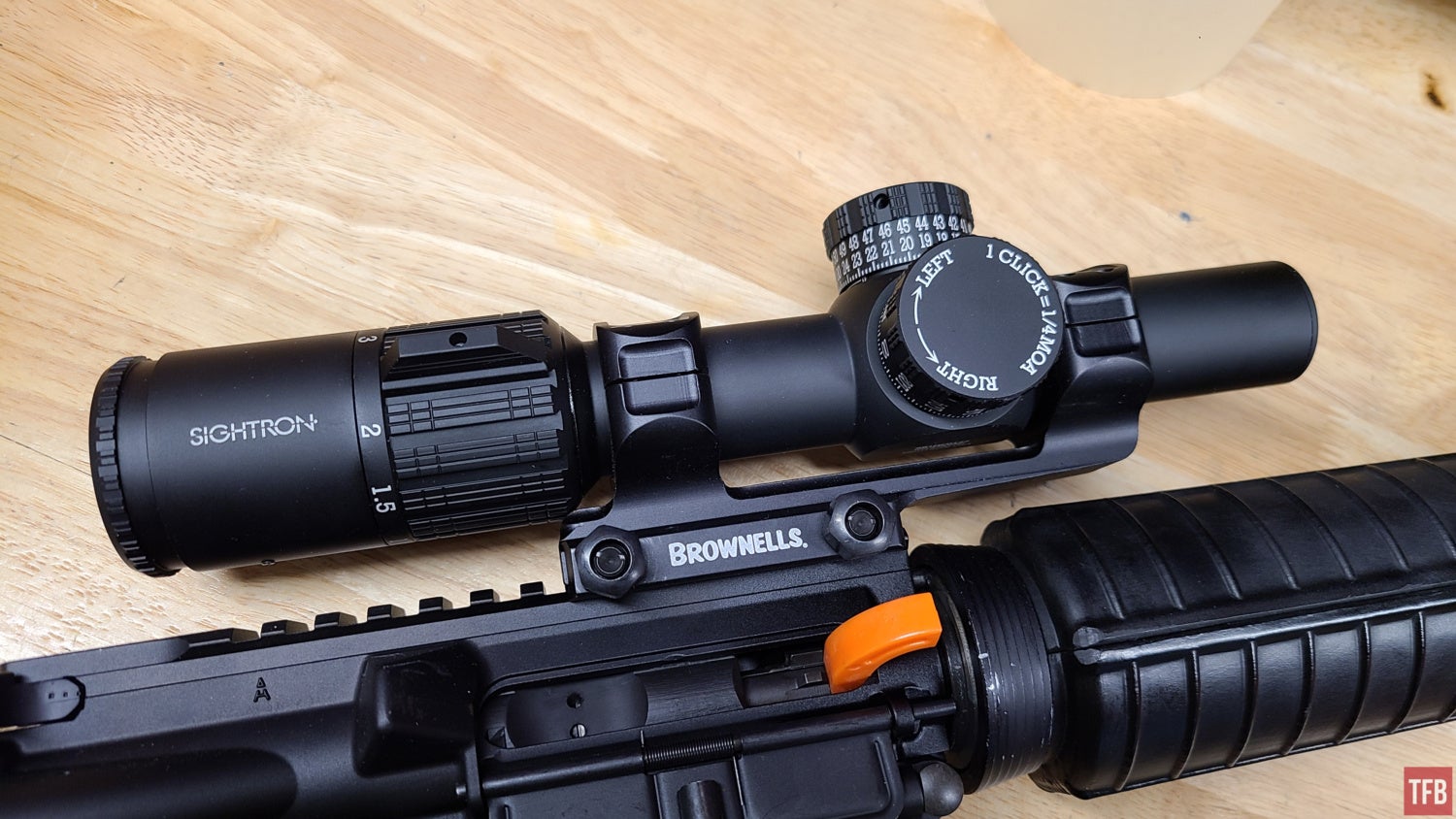Sightron is the newest entrant in the world of purpose-built competition service rifle scopes. Their S-Tac 1-4.5×24 SR-1 is not a general-purpose low-power variable optic. It is meant for standard bullseye targets at NRA or CMP matches. I spent a summer shooting it in competitions to see how it performs, and it is time to share my results.
Competition Shooting @ TFB:
- CMP Adds Mid-Range Events To National Matches
- Getting Started in CMP Service Rifle Competition
- CMP Announces Action Pistol Competitions, Other Rule Changes For 2023
- New Rules for the 2022 CMP Smallbore Rifle Competition
- CMP Plans Surplus Ammunition Sale in Spring
Disclosures are important in any review so that the audience has all of the facts. I don’t have a preexisting relationship with Sightron. This is my first time using one of their products. I reached out to ask if I could review it and they sent it out to me. I paid for the ammo and match fees to test it out.
Background
CMP and NRA service rifle matches are popular, at least in part, because they are not equipment arms races. Shooter skill matters far more than gear, and the rule structure prevents anyone from buying excessive advantages. Rifles and equipment are supposed to mimic standard military gear, at least to a point. Service Rifle shooting underwent a major change in 2016 when a rule change allowed magnified optics. Up until that point, it was all iron sights.
One example of this structure is in the optics that are allowed, which cannot exceed 4.5 power. There are several scopes on the market designed for service rifle competition with no more than 4.5x magnification. They all come equipped with target turrets and reticles designed to work with the standardized bullseye targets used in competition.
The Sightron S-Tac SR-1 enters that market at an interesting price point. Many shooters with deep pockets use Nightforce, March, or Leupold service rifle scopes. Shooters on tighter budgets tend to use Athlon or Hi-Lux dedicated service rifle scopes, or whatever 1-4x LPVO they happen to have. The S-Tac SR-1 competes in the price-conscious tier but is specifically designed for competition.
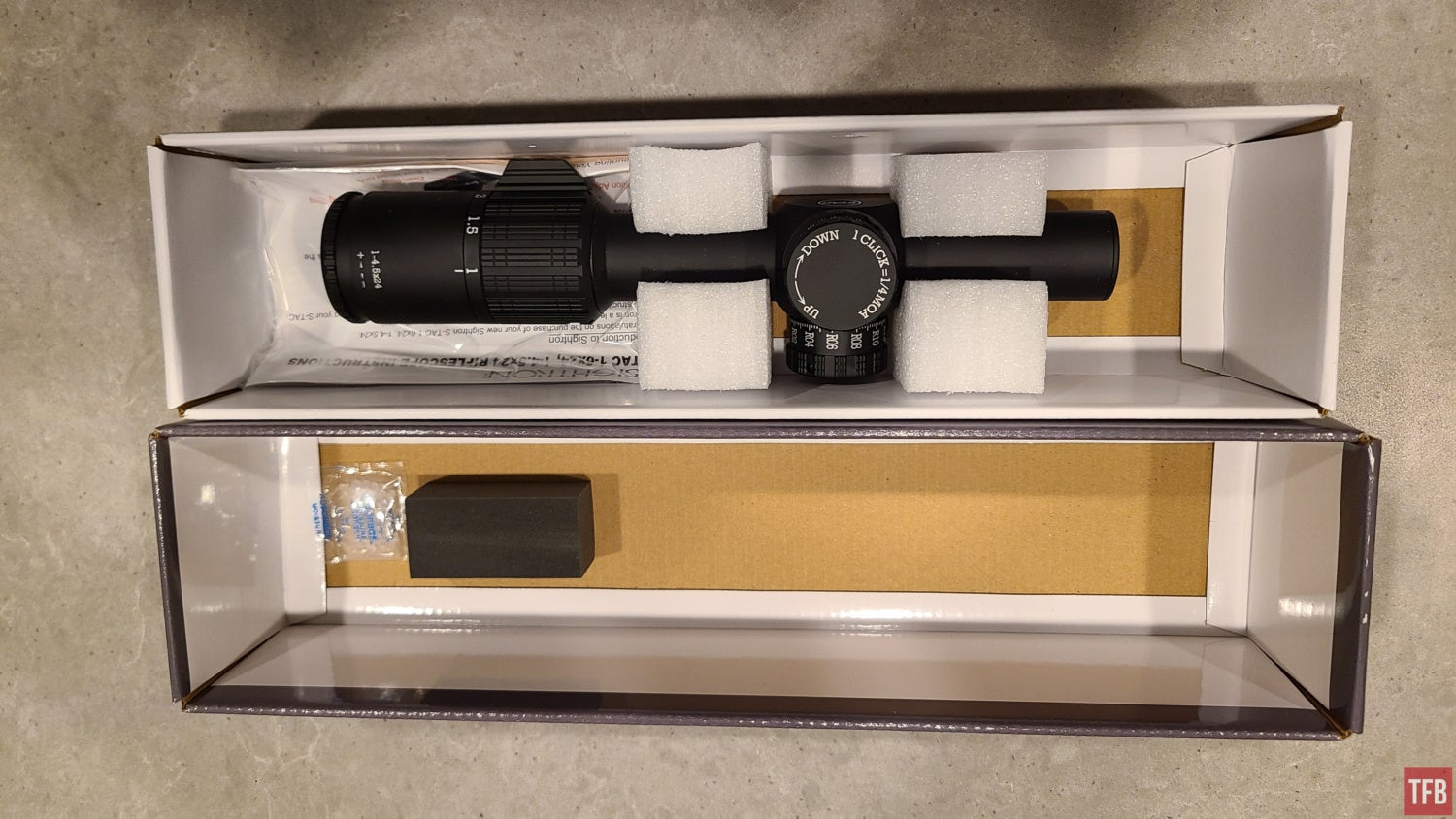
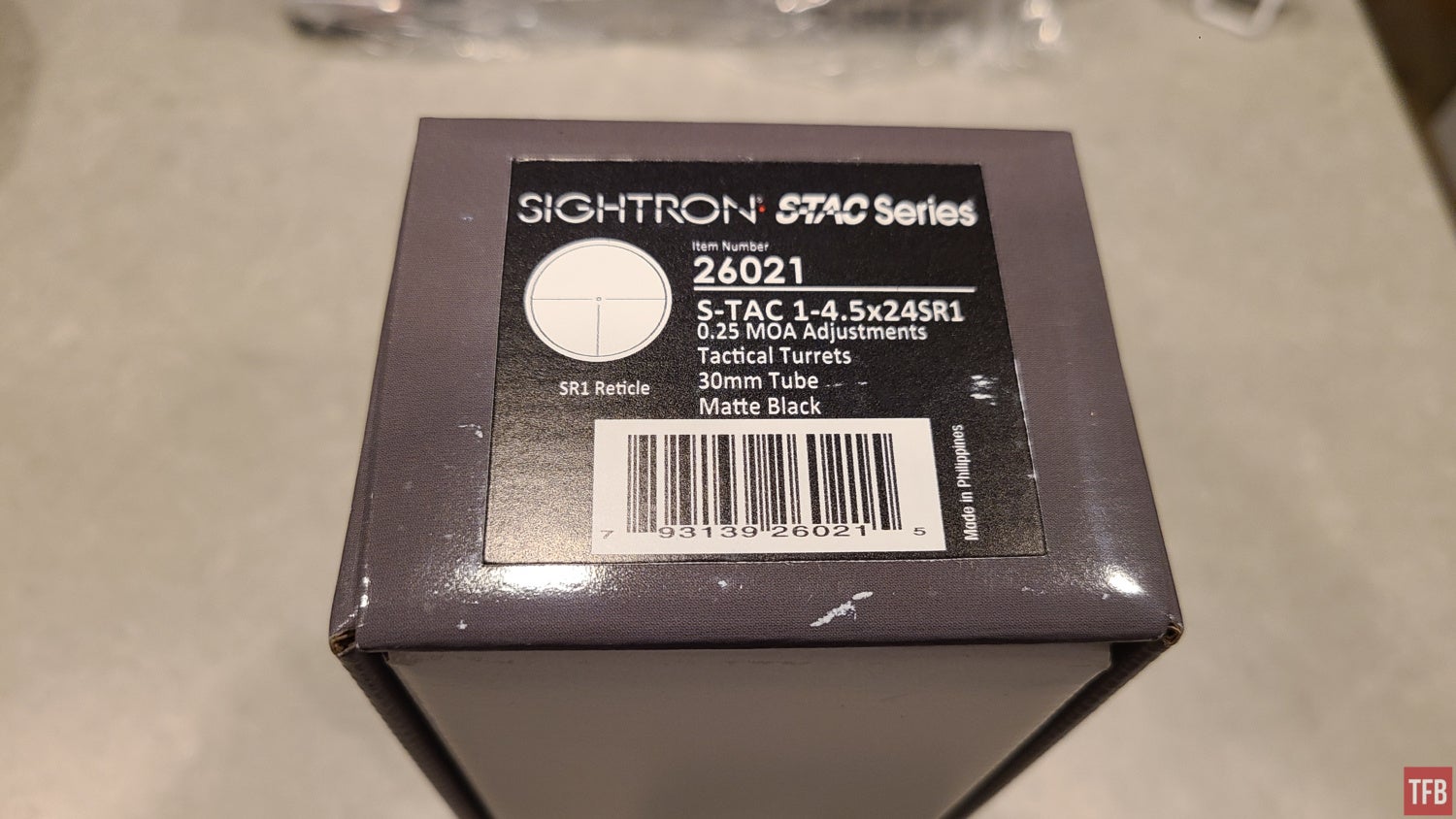
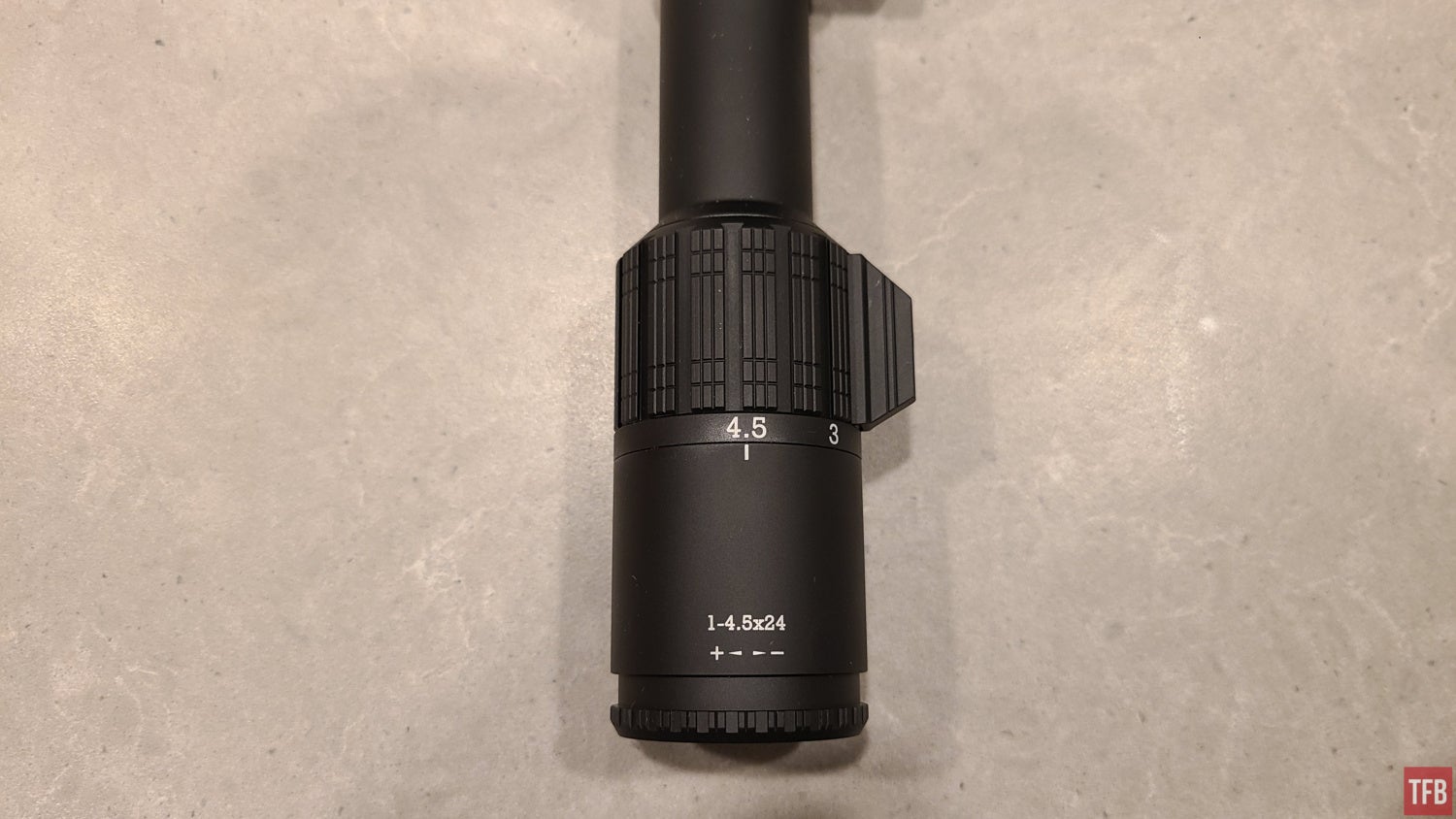
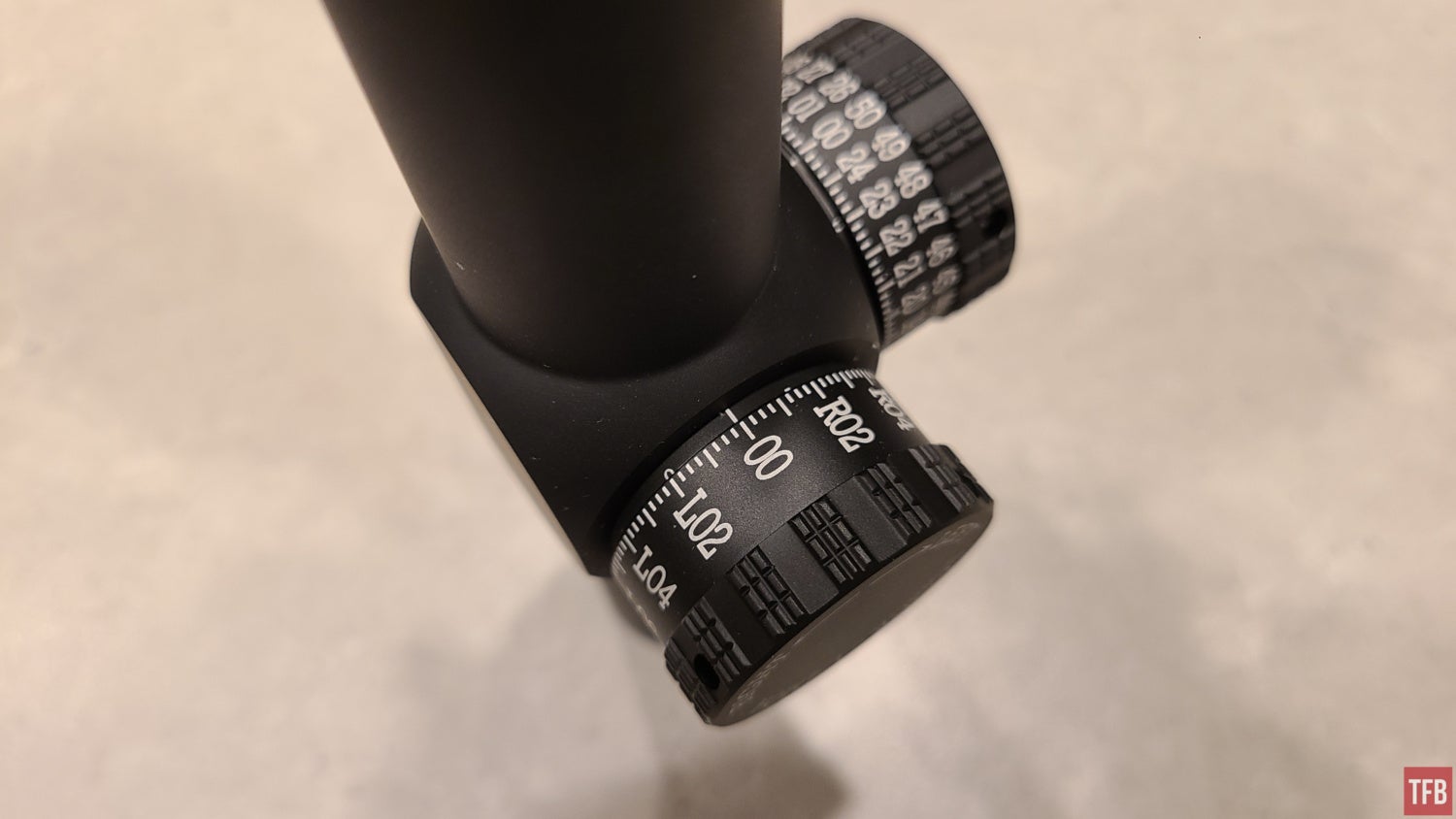
Setup
Some of the key features that separate the S-Tac SR-1 from regular LPVOs are the reticle and turrets. All targets used in service rifle matches appear to have about the same size aiming black, roughly 6-6.5 MOA. The SR-1 reticle puts a 9 MOA ring around that aiming black, leaving a small white outline inside the ring when perfectly centered. It also has a 0.5 MOA center dot. Stadia lines extend out at 3-, 6-, and 9-o’clock to draw the eye to the center and help keep the scope level.
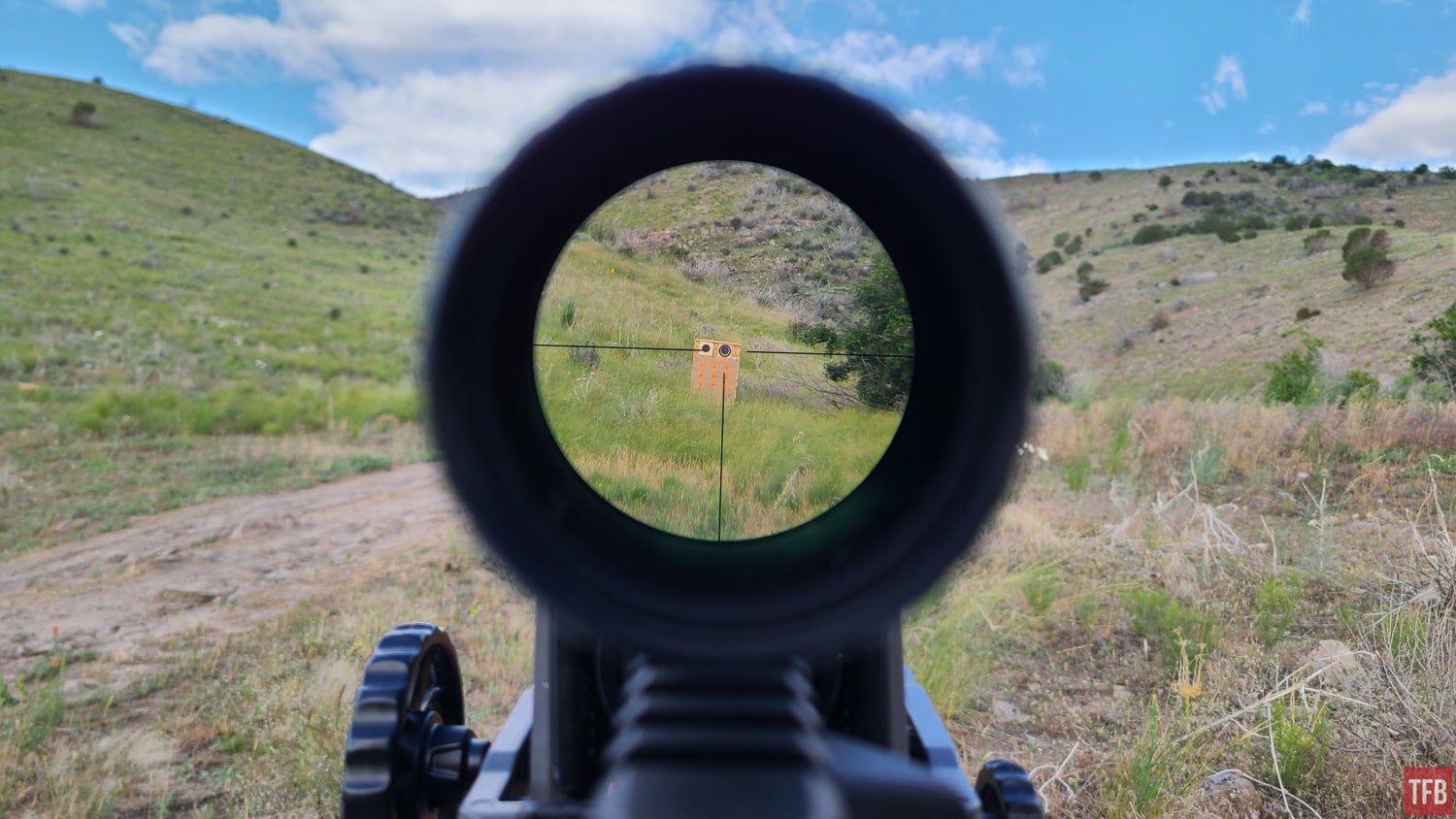
If you zoom in on the image you can see how the reticle outline sits around the aiming black.
Most scopes under 6x or 8x are never dialed, except for initial zeroing. Not so with a competition scope, where the turrets are used constantly. Accordingly, the S-Tac SR-1 has target turrets for both windage and elevation. It also uses 0.25 MOA clicks for very fine adjustments. The scope caps are resettable by loosening the 3x 1.5MM screws around the top of each turret. The clicks are not the best in the world but can be counted by feel.
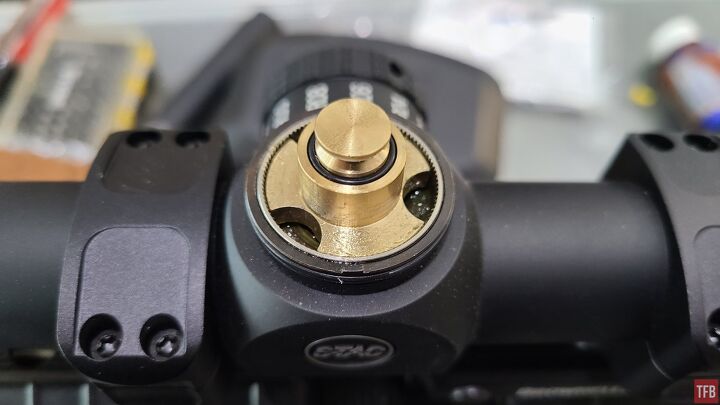
SR-1 with the turret removed.
Zeroing the S-Tac SR-1 was uneventful. I mounted it in a Brownells cantilever, shot it, and reset the turrets once it was on at 100 yards with my match ammo. After my first match using the scope, I changed to a Vortex extended cantilever to move the scope forward for more comfortable eye relief.
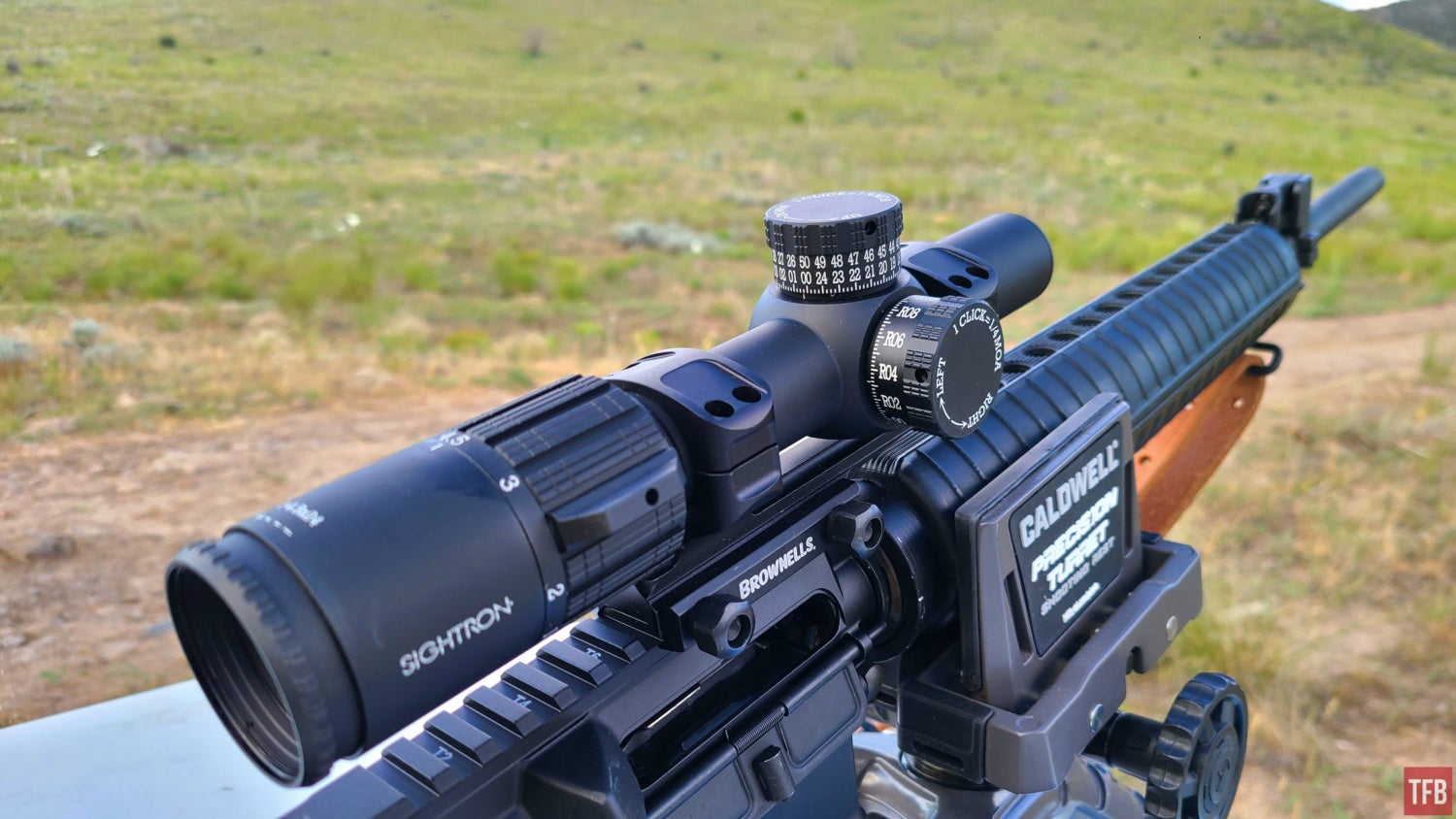
Zeroing in the Caldwell Precision Turret Rest.
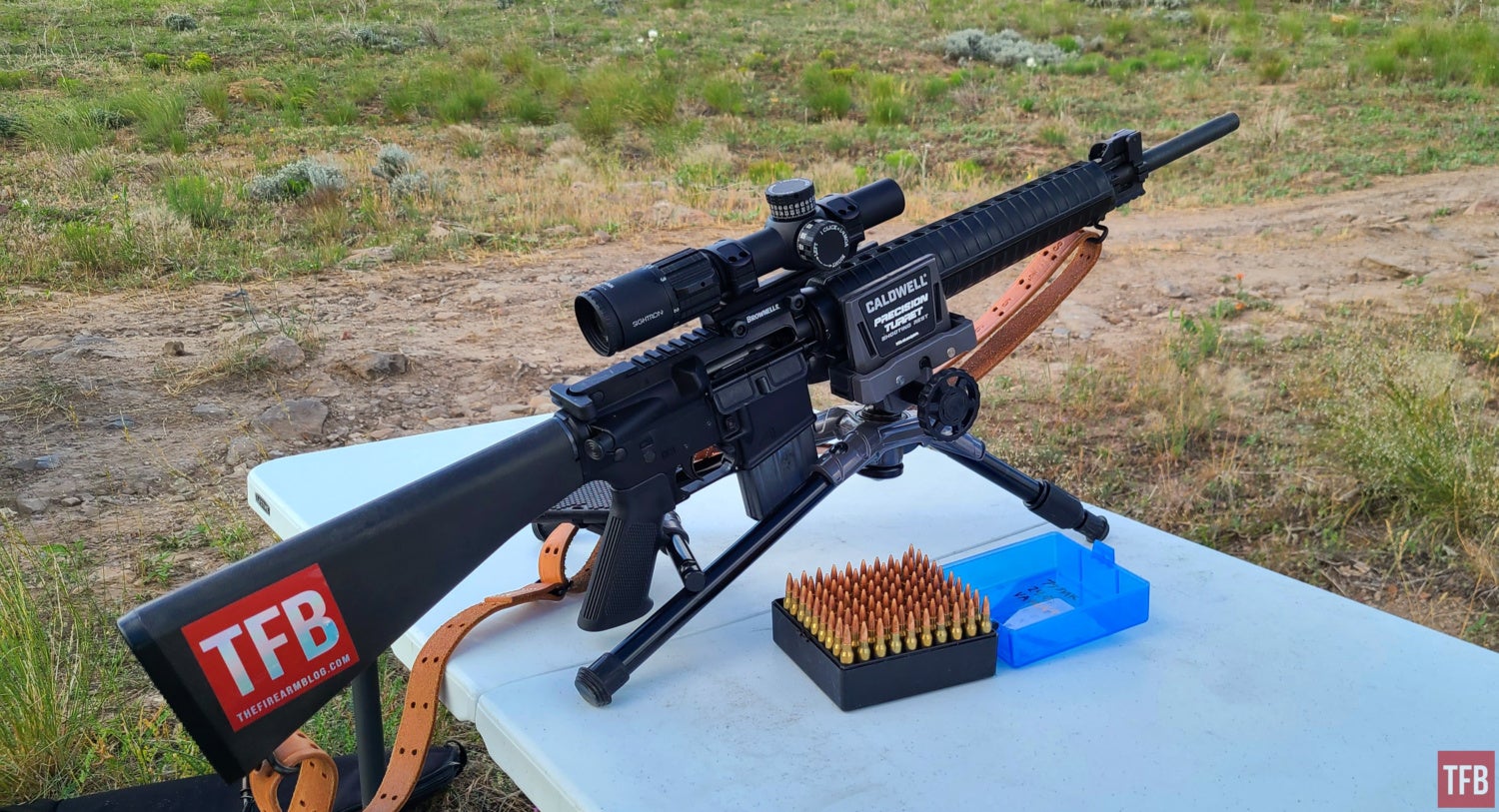
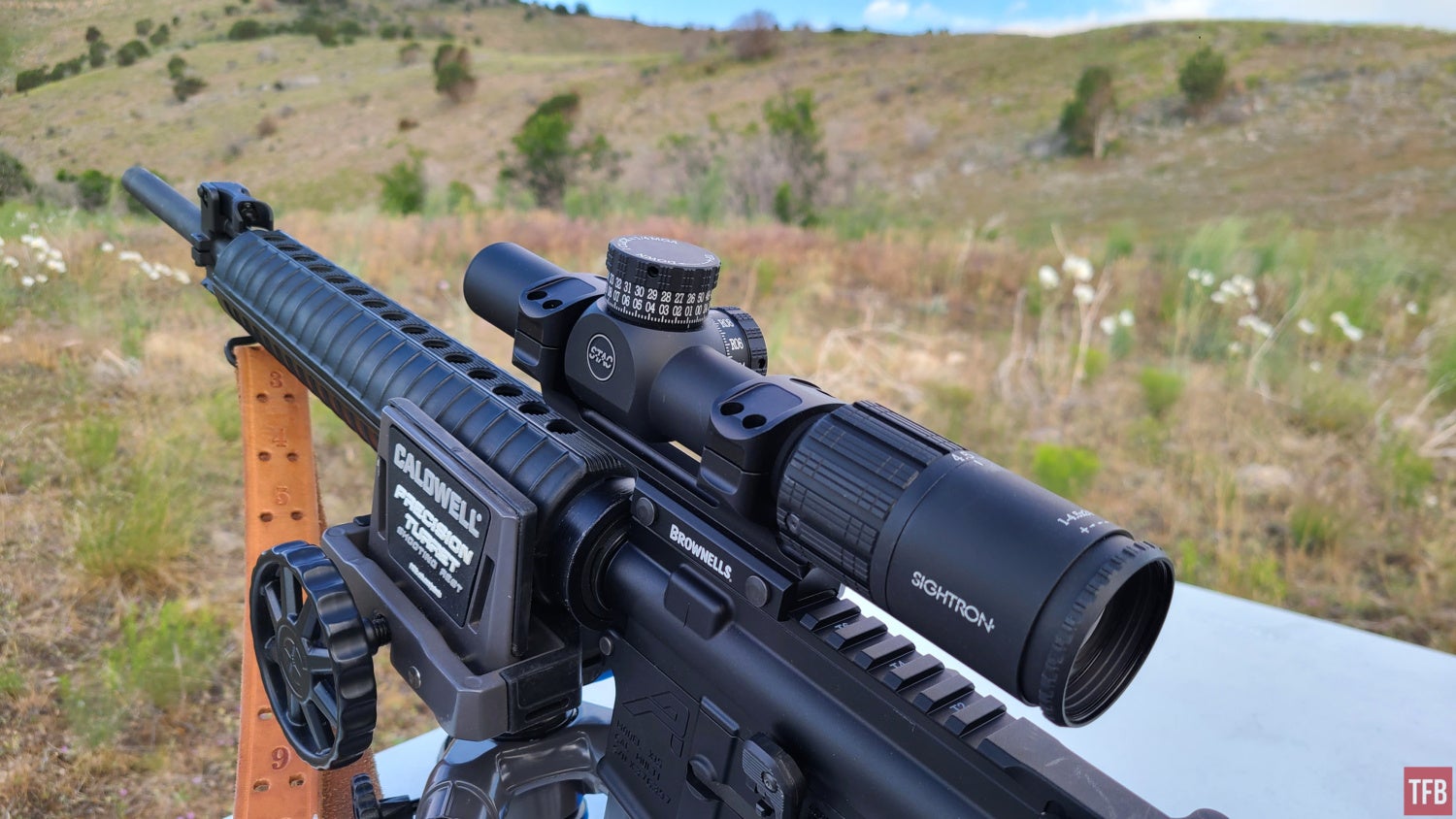
Competitions Where It Worked
I used the S-Tac SR-1 in three CMP High Power matches. All were the EIC course of fire, which consists of:
- 10 rounds at 200 yards, standing, in 10 minutes.
- 10 rounds at 200 yards rapid fire, standing to sitting in 60 seconds.
- 10 rounds at 300 yards rapid fire, standing to prone in 70 seconds.
- 20 rounds at 600 yards, prone, in 20 minutes.
You will note that there are no sighting shots in this match. Competitors must know their sight adjustments for the various ranges (and environmental conditions) and must trust that their scopes track properly. In two of those matches, there were no problems. When I dialed a change, I saw it happen on the targets.
The first match resulted in a 462-12x, my highest score to date. I placed third overall and received a little medal in the mail from the CMP. The next match resulted in a 436-3x, which was a fair reflection of my performance that day. I started to get more comfortable with the scope and developed a technique of using the outer ring in the rapid-fire stages and offhand, and the center dot at 600. Now we have to talk about the third match.
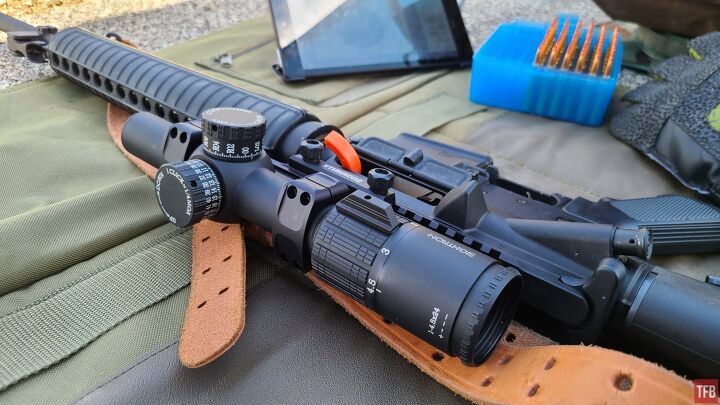
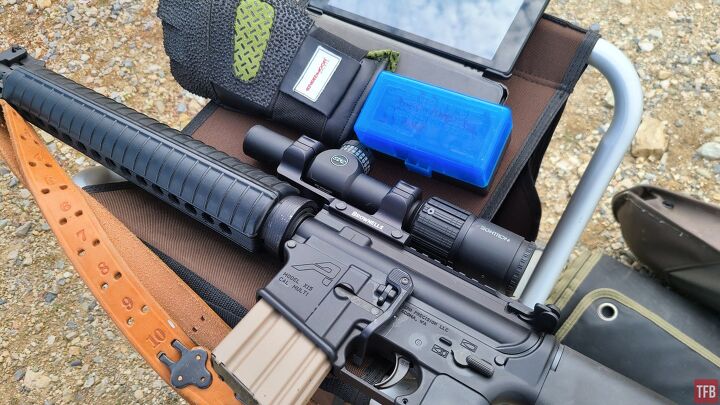
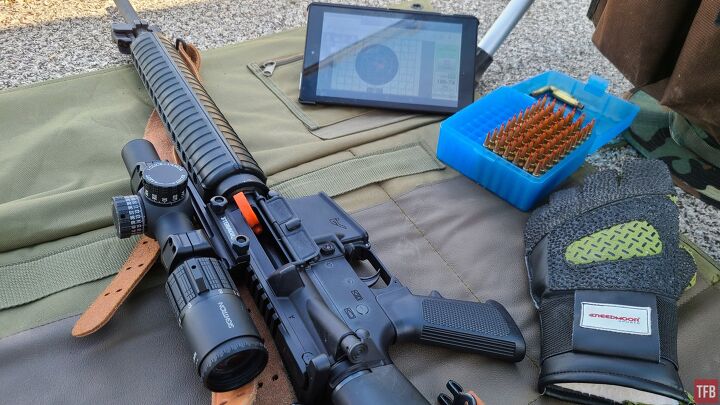
A Match Where It Failed
This match started strong with an 86 offhand and a 97 in sitting. I was feeling great. Then disaster struck. I dialed in my elevation for 300 yards, dropped into position, established a solid natural point of aim, and fired two shots that felt perfect. We were shooting on electronic targets, so I took a look while I changed magazines. I had put two rounds, perfectly centered, right in the 5-ring. I reached for the elevation turret and found it to be loose. It was turning, but only clicking about half of the time. I threw on a bunch of elevation and got into the 10-ring, but not solidly. I spent the rest of the string bouncing around the border of the 9- and 10-ring and came up with an 83.

Putting rounds downrange in rapid-fire sitting.

Triumphal fist pump with my scorer.

Rapid prone on the 300-yard line.

Throwing on extra elevation to try and get back into the black.
The failure of the elevation turret left me in a pickle for the next stage. EIC matches have no sighter shots. I knew how much elevation I usually add when moving from 300 to 600 yards, but I was not entirely sure how much elevation was dialed in because the turret may have moved during the stage. I tightened down the set screws and added my best guess for the 600-yard line. My first shot at 600 was also in the 5-ring. The turret tracked properly and I added elevation to get back on track, but my chances for a decent score were gone.
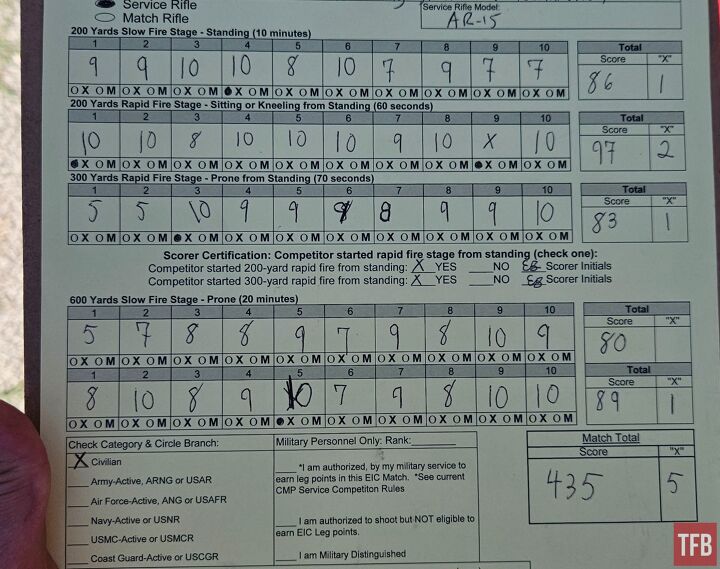
Pain.
I took it to the range after this fiasco to try and get it back on zero. I set the elevation turret back to zero and fired a group. It was clear that this would not be the actual zero due to the slippage but it was a convenient place to start. With the rifle rested in a Caldwell Precision Turret rest I found that it was 5.75 MOA low from the correct zero. Given my repeated hits in the 5-ring, that makes sense.
It is possible that I failed to sufficiently tighten the screws securing the turret. It is also possible that the screws worked loose despite being tight. Perhaps the design choice to use 1.5mm screws made it difficult to tighten the screws as tight as they need to be to stay put. There is no way to really know for sure. It did hold fine for the previous match, so at one point it was tight enough to function. But at some point that stopped being the case. A thread-locking compound is probably a good idea, though.
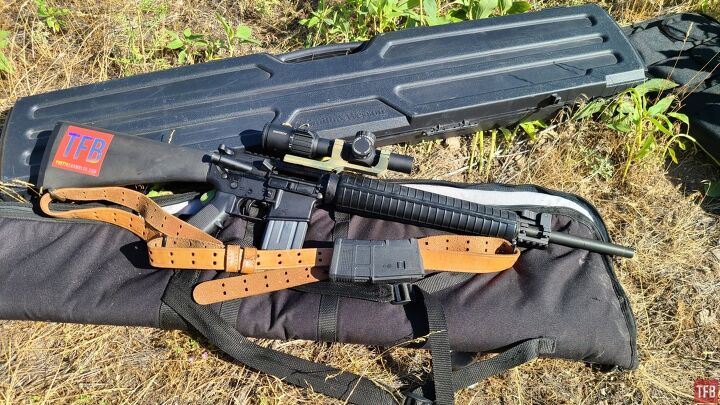
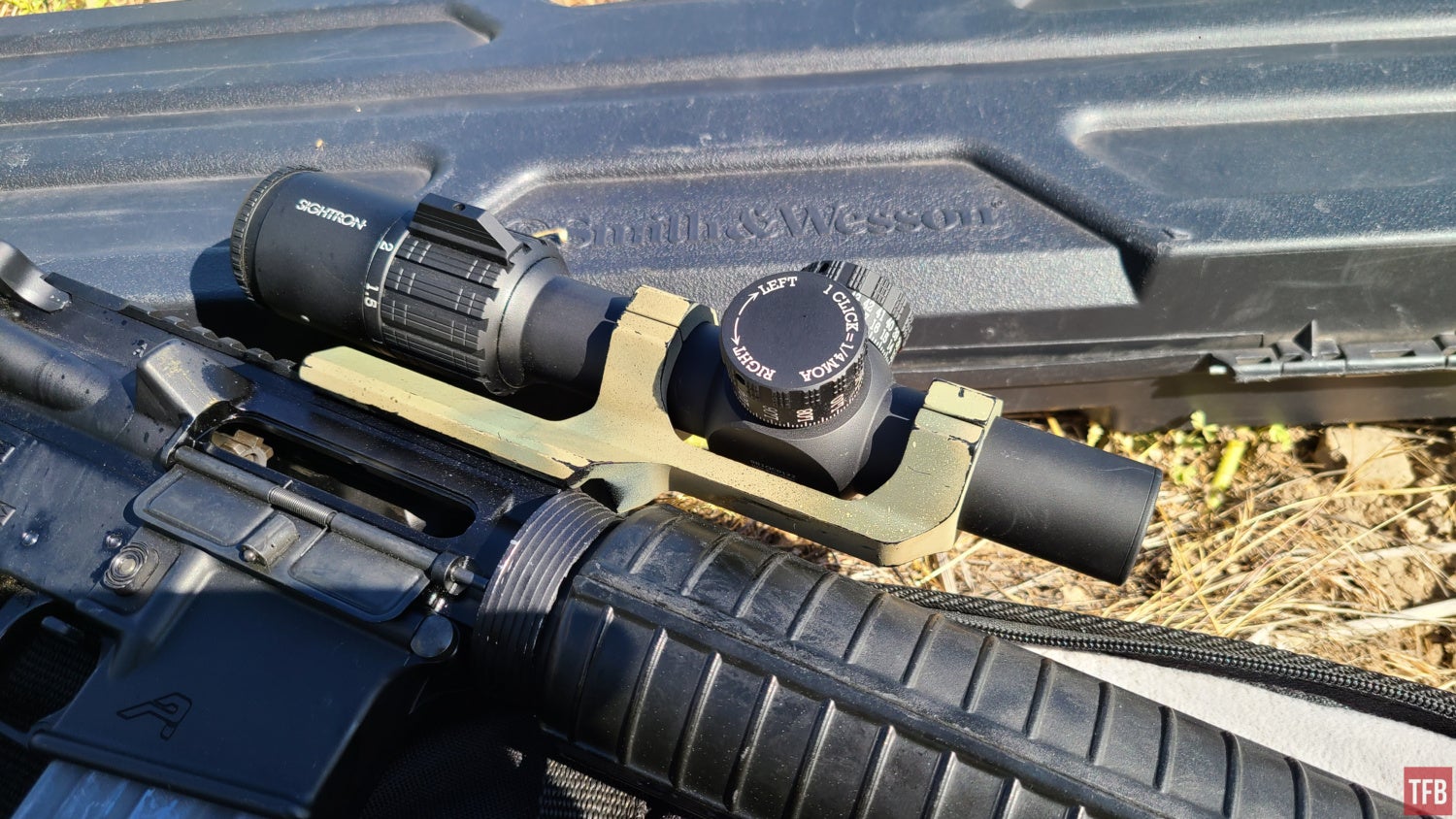
Design Feedback
A review should rarely be all positive or all negative. The elevation turret slippage could have been a scope failure or could have been a user error. Take that for what you will. Despite that incident, my impression of the S-Tac SR-1 is generally positive but there are a few things I would change.
This is a very minor nit to pick, but I don’t love the font used on the turrets. The typewriter-esque serif font looks a little cluttered. I would also change the top row of numbers to only be a white outline rather than an identical, color-filled font. That would make it a little easier to focus on the bottom row, which is where 90%+ of use will happen. There are 25 MOA of adjustment on each revolution, and with a 100-yard zero, I’m only at 15.5 MOA for 600 yards. Another approach would be using much smaller numbers for the top row, and using the extra space to put taller hash marks on each full minute.
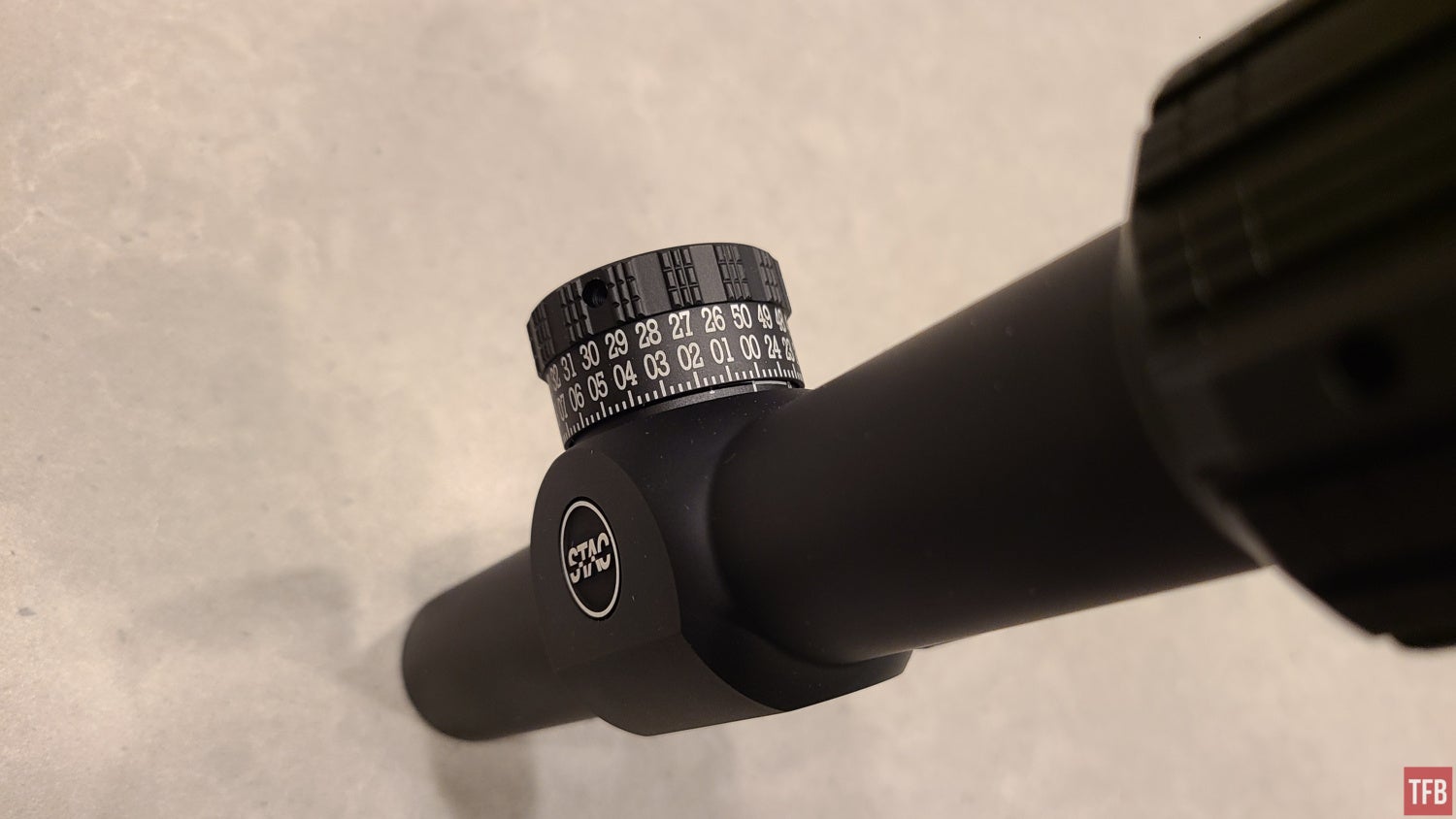
Changing up the turret font would help with legibility.
A zero stop of some sort is also needed. It doesn’t need to be fancy, even a low-tech solution like the shims from a Vortex PST Gen I would be great. An extra revolution on the top turret is an easy way to ruin a match. As noted previously, a better turret attachment system would also be helpful. Tiny little set screws do not inspire confidence, and manufacturers are increasingly going away from them. The single-screw turrets used by Bushnell on the Match Pro ED are one example of a better system.
Adding illumination could be a bonus feature, but is not really necessary on a scope like this. The added expense would be wasted in most situations. However, a slightly larger center dot, perhaps 0.75 MOA instead of 0.5 MOA, would be easier to pick up against the black target background.
My last point of issue would be image clarity on the outer perimeter of the scope. All LPVO scopes have some of this. It’s also generally more pronounced on less expensive optics. It is harder to see mirage shifts because the area of perfect clarity is narrower. This is a disadvantage on the 600-yard line, but it’s not a fatal flaw or anything. The Sightron glass also looks better than the other service rifle scopes at this price point, and the colors and contrast in the image are better than budget LPVOs.
Conclusion
The Sightron S-Tac SR-1 gets a lot of things right. It is not perfect, and as noted previously, there are things that I would change. But if you are a service rifle shooter on a budget, the $500 price point could be the difference between running a scope and shooting irons for another season. If you need a scope for your service rifle, this is an option to look at. Just make sure you get those turret screws tight!
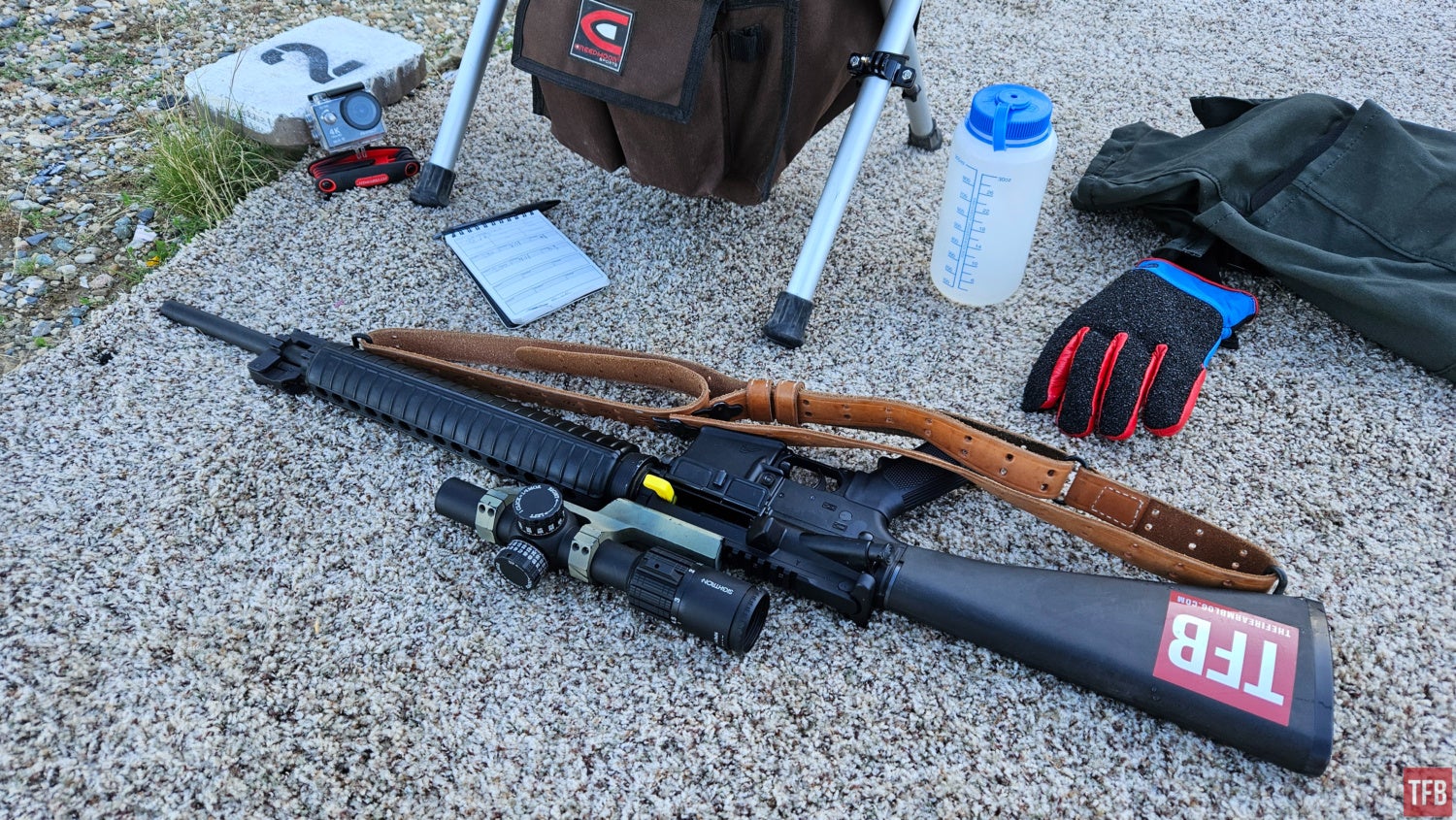
We are committed to finding, researching, and recommending the best products. We earn commissions from purchases you make using the retail links in our product reviews. Learn more about how this works.
 Your Privacy Choices
Your Privacy Choices
